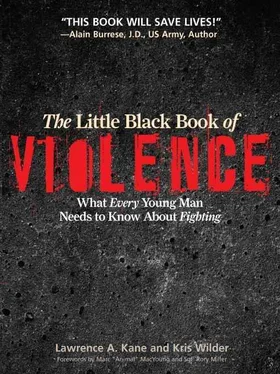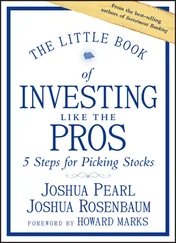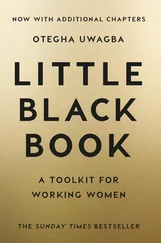Most self-defense experts agree that nine out of ten dangers can be identified and avoided simply by learning how to look out for them. Since it is still possible to talk your way out of more than half of the potentially violent situations that you do get yourself into, this means that you should only need to fight your way out of three, four, or at worst, five of every hundred hazardous encounters. With good situational awareness, you may never have anywhere near a hundred such confrontations in your lifetime so those odds really aren’t all that bad, huh?
Knowing when it is time to leave a party is a common example of good situational awareness. Fights at parties tend to happen after a certain time of night. It’s not the hour on the clock that’s important, but rather the mood of the crowd. Most people have a good time and leave long before the sh*t starts. Just about everyone who’s going to hook up has already done so; they’ve found a date, left together, and are off having fun. As the crowd starts to thin, those who have nothing better to do than cause trouble are the ones who are left. Buzzing with frustration and raging hormones, those who insist on hanging on well into the night are the ones who get caught up in it when the fecal matter is most likely to fly. If you pay attention to the behaviors of those around you, however, it’s fairly easy to know when it’s time to leave. If you’re not there when things start to get rough, bad things can’t happen to you.
Good situational awareness helps make you a hard target by eliminating easy opportunities for those who wish to do you harm. Constant vigilance is emotionally and physically draining, however, so you need a process for knowing when to ratchet your level of alertness up or down.

The same thing happens on the street. Criminals may be strong, fast, crafty, and mean, but in general, they are neither exceptionally bright nor hardworking. We are stereotyping here, but seriously, how many rocket scientists or Mensa members are there on death row? Further, many crimes are quick fix substitutes for earning a living the old fashioned way via hard work. Why then would a street thug go out of his way to tangle with a tough, prepared target when easier prey is readily available?
By constantly surveying and evaluating your environment, you achieve more control over what ultimately happens to you. Good situational awareness helps you make yourself a hard target by eliminating easy opportunities for those who wish to do you harm. It’s not a guarantee of perfect safety since there truly are no absolutes when it comes to self-defense, yet good situational awareness can let you predict and avoid most difficult situations.
Remember a time when you were driving along minding your own business when you suddenly “knew” the car beside you was going to swerve into your lane and took evasive action to avoid an accident? This ability to predict what other drivers are going to do is an excellent example of good situational awareness.

Situational awareness is something that everyone instinctively has, yet few individuals truly pay attention to. In most cases, you should be able to spot a developing situation, turn around, and walk (or drive) away before anything bad happens. Once you understand the basic concepts and begin to pay attention to your built-in survival mechanisms, situational awareness can also be refined and improved through practice. Sometimes, however, try as you might to avoid it, trouble finds you and you will have to react accordingly. Good awareness helps you be prepared for that as well.
Can you remember a time when you were driving along the highway, suddenly “knew” the car beside you was going to swerve into your lane, and took evasive action to avoid an accident? Almost everyone who drives has done that on numerous occasions. It is so common that most people forget about such incidents shortly after they happen. This ability to predict what other drivers are going to do is an excellent example of good situational awareness.
However, vigilance in this area is emotionally and physically draining. No one can maintain an elevated level of awareness at all times in all places. There is a difference between being aware and becoming paranoid. Consequently, many self-defense experts use a color code system to help define and communicate appropriate levels of situational awareness for whatever situation people could find themselves in.
The most commonly used approach, codified by Colonel Jeff Cooper, was based in large part on the color alert system developed by the United States Marine Corps during World War II and later modified for civilian use. These color code conditions include White (oblivious), Yellow (aware), Orange (alert), Red (concerned), and Black (under attack). This code should not be confused with the similar U.S. Department of Homeland Security threat level alerts that use similar colors.
The mindset and attitude of each condition are described below. While it is possible to move up and down the entire scale, clearly hitting each condition in turn, it is also possible to skip from one level to another very quickly. Consequently, while it is valuable to think of each condition as a distinct state along a continuum like rungs of a ladder, don’t get too hung up on each level. The important concept is that the diverse tactical situations you face will warrant various levels of vigilance. It is prudent to consciously choose the appropriate level of situational awareness.
Condition White (Oblivious).In Condition White, you are pretty much oblivious to your surroundings, completely unprepared for trouble if it arrives. You are a lemming, distracted or unaware, thus unable to perceive any existing danger in your immediate area or be alert for any that may be presented to you. Drivers carrying on conversations with passengers, people talking on cell phones, joggers wearing headphones and jamming to their music, and other generally preoccupied individuals fall into this category.
You may remember a time when you were driving along with the stereo cranked up and grooving to the music when suddenly the police officer you didn’t know was behind you lit off his siren and lights. Nearly jumping out of your skin, you checked your speedometer only to find you’d been speeding and knowing you’d been busted. That’s an example of being in Condition White. While almost everyone has done it, it’s not too cool, huh?
An interesting exercise is to do a little people watching, trying to identify those around you in this mode. Their heads will commonly be tilted downward toward the ground in front of them or fixed on a spot in the distance such as one might do when looking at a tourist map, reading a book, or searching for a distant address or landmark. These folks are easy marks for just about any pickpocket, mugger, rapist, or other deviant they stumble across.
Any time you are near others, especially strangers, it pays to be vigilant. Bad guys don’t want to fight. They want to win. Consequently, tough, prepared targets are usually left alone in favor of easier prey. You cannot, however, walk around in a constant state of hyper-vigilance or paranoia. Self-defense experts often use a color code system to define appropriate levels of situational awareness that help you strike the right balance, paying attention to what’s important, and keeping yourself safe. The colors themselves are far less important than the overall concept—different levels of awareness are appropriate for different situations.
Читать дальше













